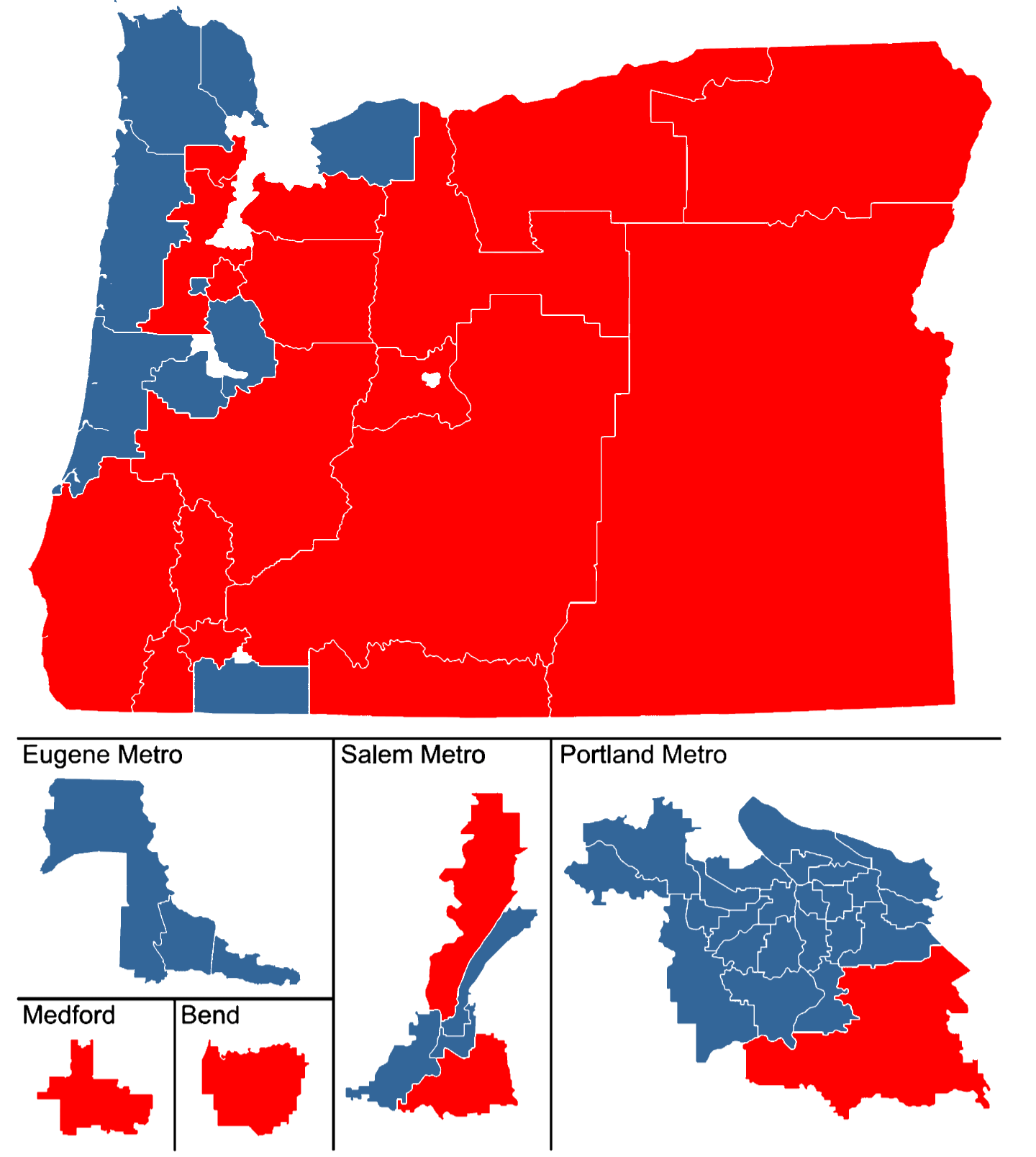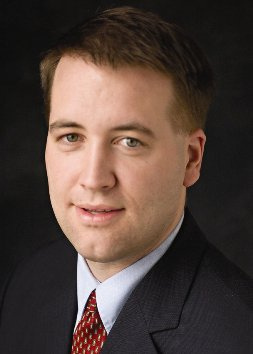|
Governor Of Oregon
The governor of Oregon is the head of government of Oregon and serves as the commander-in-chief of the state's military forces. The title of governor was also applied to the office of Oregon's chief executive during the provisional and U.S. territorial governments. The current governor of Oregon is Tina Kotek, who took office on January 9, 2023. The governor's salary as of 2018 is $98,600. Constitutional descriptions Article V of the Oregon State Constitution sets up the legal framework of the Oregon Executive Branch. Eligibility Article V, Section 1 states that the governor must be a U.S. citizen, at least 30 years of age, and a resident of Oregon for at least three years before the candidate's election. Section 2 extends ineligibility as follows: Section 1 further sets the maximum number of consecutive years a governor may serve, specifying that There is no specified limit on the number of total terms. John Kitzhaber is the only governor to have served non-consecu ... [...More Info...] [...Related Items...] OR: [Wikipedia] [Google] [Baidu] |
Kate Brown
Katherine Brown (born June 21, 1960) is an American politician and attorney who served as the 38th governor of Oregon from 2015 to 2023. A member of the Democratic Party, she served three terms as the state representative from the 13th district of the Oregon House of Representatives from 1991 to 1997, three terms as the state senator from the 21st district of the Oregon Senate from 1997 to 2009, three terms as majority leader of the Oregon Senate from 2003 to 2009, and two terms as Oregon Secretary of State from 2009 to 2015. She assumed the governorship upon the resignation of John Kitzhaber in 2015. She was elected to serve out the remainder of his gubernatorial term in the special election in 2016 and was reelected to a full term in 2018. As an openly bisexual woman, Brown has made history several times through her electoral success. In 2008, she became the first openly LGBT person elected secretary of state within a U.S. state, and the first openly LGBT person e ... [...More Info...] [...Related Items...] OR: [Wikipedia] [Google] [Baidu] |
The Oregonian
''The Oregonian'' is a daily newspaper based in Portland, Oregon, United States, owned by Advance Publications. It is the oldest continuously published newspaper on the West Coast of the United States, U.S. West Coast, founded as a weekly by Thomas J. Dryer on December 4, 1850, and published daily since 1861. It is the largest newspaper in Oregon and the second largest in the Pacific Northwest by circulation. It is one of the few newspapers with a statewide focus in the United States. The Sunday edition is published under the title ''The Sunday Oregonian''. The regular edition was published under the title ''The Morning Oregonian'' from 1861 until 1937. ''The Oregonian'' received the 2001 Pulitzer Prize for Public Service, the only gold medal annually awarded by the organization. The paper's staff or individual writers have received seven other Pulitzer Prizes, most recently the award for Pulitzer Prize for Editorial Writing, Editorial Writing in 2014. In late 2013, home deliver ... [...More Info...] [...Related Items...] OR: [Wikipedia] [Google] [Baidu] |
Joseph Lane (2)
Joseph Lane (December 14, 1801 – April 19, 1881) was an American politician and soldier. He was a state legislator representing Evansville, Indiana, and then served in the Mexican–American War, becoming a general. President James K. Polk appointed Lane as the first Governor of Oregon Territory. When Oregon was admitted as a state in 1859, Lane was elected one of Oregon's first two U.S. Senators. In the 1860 United States presidential election, Lane was nominated for vice president of the pro-slavery Southern wing of the Democratic Party, as John C. Breckinridge's running mate. Lane's pro-slavery views and sympathy for the Confederate States of America in the Civil War effectively ended his political career in Oregon. One of his sons was later elected U.S. Representative, and a grandson U.S. Senator, making Lane the patriarch of one of the state's most prominent political families. Early life Joseph Lane was born in Buncombe County, North Carolina, on December 14, 1801, t ... [...More Info...] [...Related Items...] OR: [Wikipedia] [Google] [Baidu] |
Julie Fahey
Julianne Elizabeth Fahey ( ; born June 18, 1978) is an American Democratic politician serving as speaker of the Oregon House of Representatives. She represents the 14th district, which covers parts of Lane County, including Veneta and western Eugene. Education and career Fahey graduated from the University of Notre Dame in 2000. Fahey served as Treasurer of the Democratic Party of Oregon from 2015 to 2017, and was chair of the Lane County Democratic Party from 2012 to 2014. In October 2015, Fahey announced her candidacy for the House seat vacated by Val Hoyle, who retired in order to run for Oregon Secretary of State The secretary of state of Oregon, an elected constitutional officer within the executive branch of the government of the U.S. state of Oregon, is first in the line of succession to the List of Governors of Oregon, governor. The duties of the offi .... Fahey defeated James Manning Jr. in the Democratic primary with 60% of the vote, and in the general electio ... [...More Info...] [...Related Items...] OR: [Wikipedia] [Google] [Baidu] |
Oregon House Of Representatives
The Oregon House of Representatives is the lower house of the Oregon Legislative Assembly, the upper house being the Oregon State Senate. There are 60 members of the House, representing 60 districts across the state, each with a population of approximately 65,000. The House meets in the west wing of the Oregon State Capitol in Salem, Oregon, Salem. Members of the House serve two-year terms without term limits. In 2002, the Oregon Supreme Court struck down Oregon Ballot Measure 3 (1992), that had restricted State Representatives to three terms (six years) on procedural grounds. In the current legislative session, Democratic Party (United States), Democrats have 36 seats, a slim supermajority by one seat, while the Republican Party (United States), Republicans have a minority of 24 seats. Current session , Oregon's 1st House district, 1 , , Court Boice, , , Republican , , Gold Beach, Oregon, Gold Beach , , 2023 , - , Oregon's 2nd House district, 2 , , Virgle Osborne ... [...More Info...] [...Related Items...] OR: [Wikipedia] [Google] [Baidu] |
Rob Wagner (politician)
Robert Arnold Wagner (born January 10, 1973) is an American Democratic politician currently serving as President of the Oregon State Senate. He represents the 19th district, which includes the cities of Durham, Lake Oswego, Rivergrove, Tualatin, West Linn, parts of southwest Portland and Tigard, as well as unincorporated parts of southwestern Clackamas County, eastern Washington County, and southern Multnomah County. Early life and education Wagner grew up in Lake Oswego and graduated from Lake Oswego High School. He studied at Wesleyan University and graduated from Portland State University with a degree in political science. He earned a masters in public policy from George Washington University. Career He served as a director of political and legislative affairs for the American Federation of Teachers and was associate vice-president for advancement at Portland Community College, overseeing the foundation, marketing and public relations. In December 2017, Wagner announ ... [...More Info...] [...Related Items...] OR: [Wikipedia] [Google] [Baidu] |
Oregon State Senate
The Oregon State Senate is the upper house of the State legislature (United States), statewide legislature for the US state of Oregon. Along with the lower chamber Oregon House of Representatives it makes up the Oregon Legislative Assembly. There are 30 members of the state Senate, representing 30 districts across the state, each with a population of 141,242. The state Senate meets in the east wing of the Oregon State Capitol in Salem, Oregon, Salem. Oregon, along with Arizona, Maine, New Hampshire, and Wyoming, is one of the five U.S. states to not have the office of the Lieutenant governor (United States), lieutenant governor, a position which for most upper houses of State legislature (United States), state legislatures and for the United States Congress (with the vice president) is the head of the legislative body and holder of the casting vote in the event of a tie. Instead, a separate position of Senate president is in place, removed from the state executive branch. If the ... [...More Info...] [...Related Items...] OR: [Wikipedia] [Google] [Baidu] |
Elizabeth Steiner
Elizabeth Steiner (born April 5, 1963), also known as Elizabeth Steiner Hayward, is a Democratic Party (Oregon), Democratic politician who is currently serving as the 30th Oregon State Treasurer, Treasurer of Oregon since 2025. She previously served as a member of the Oregon Senate, representing the Oregon's 17th Senate district, 17th district. Steiner was appointed to the Senate in 2011 by commissioners from Multnomah County, Oregon, Multnomah and Washington County, Oregon, Washington counties following the resignation of her predecessor, Suzanne Bonamici. On November 5, 2024, Steiner defeated state senator Brian Boquist in the 2024 Oregon State Treasurer election, becoming the first woman to be elected treasurer in Oregon. Career Steiner is an adjunct associate professor of family medicine at Oregon Health & Science University (OHSU). She is a past president of the Oregon Academy of Family Physicians. In November 2018, Steiner was appointed to co-chair the Oregon legislatu ... [...More Info...] [...Related Items...] OR: [Wikipedia] [Google] [Baidu] |
Oregon State Treasurer
The Oregon state treasurer is a constitutional officer within the executive branch of the government of the U.S. state of Oregon, elected by statewide vote to serve a four-year term. As chief financial officer for the state, the office holder heads the Oregon State Treasury, and with the Governor and Secretary of State, serves on the Land Board. The current state treasurer is Elizabeth Steiner, who was elected in 2024. Divisions * Finance Division - acts as the central bank for all state agencies and is the largest financial institution in the state. * Investment Division - manages the portfolio of investments for the state's funds. * Debt Management Division - coordinates bonds issued by the state and its agencies, and monitors relevant markets and economic trends. * Information Services Division - responsible for the Treasury's technological infrastructure. * Executive Division - develops economic policy through strategic planning, legislative initiatives; performs the departm ... [...More Info...] [...Related Items...] OR: [Wikipedia] [Google] [Baidu] |
Democratic Party (United States)
The Democratic Party is a Centre-left politics, center-left political parties in the United States, political party in the United States. One of the Major party, major parties of the U.S., it was founded in 1828, making it the world's oldest active political party. Its main rival since the 1850s has been the Republican Party (United States), Republican Party, and the two have since dominated American politics. The Democratic Party was founded in 1828 from remnants of the Democratic-Republican Party. Senator Martin Van Buren played the central role in building the coalition of state organizations which formed the new party as a vehicle to help elect Andrew Jackson as president that year. It initially supported Jacksonian democracy, agrarianism, and Manifest destiny, geographical expansionism, while opposing Bank War, a national bank and high Tariff, tariffs. Democrats won six of the eight presidential elections from 1828 to 1856, losing twice to the Whig Party (United States) ... [...More Info...] [...Related Items...] OR: [Wikipedia] [Google] [Baidu] |
Tobias Read
Tobias Read (born July 1, 1975) is an American politician who is currently serving as the 30th Oregon Secretary of State since 2025. As a member of the Democratic Party he served as the 29th Oregon State Treasurer from 2017 to 2025. Before that, he was a member of the Oregon House of Representatives, representing the Oregon's 27th House district, 27th district from 2007 to 2017, which comprised parts of Beaverton, Oregon, Beaverton, southwest Portland, Oregon, Portland, and unincorporated Multnomah County, Oregon, Multnomah and Washington County, Oregon, Washington Counties. He served as Speaker Pro Tempore and was formerly the Democratic Majority Whip (politics), Whip. In 2016 Oregon State Treasurer election, 2016, Read ran for Oregon State Treasurer, to succeed State Treasurer Ted Wheeler, who was barred from running in 2016 by term limits. Read won the general election against Republican Party (United States), Republican Jeff Gudman on November 8, 2016 and became the state tre ... [...More Info...] [...Related Items...] OR: [Wikipedia] [Google] [Baidu] |
Oregon Secretary Of State
The secretary of state of Oregon, an elected constitutional officer within the executive branch of the government of the U.S. state of Oregon, is first in the line of succession to the List of Governors of Oregon, governor. The duties of the office are auditor of public accounts, chief elections officer, and administrator of public records. Additionally, the secretary of state serves on the Oregon State Land Board and chairs the Oregon Sustainability Board. Following every United States Census, if the Oregon Legislative Assembly cannot come to an agreement over changes to legislative redistricting, the duty falls to the secretary of state. The current secretary of state is Democrat Tobias Read, who took office on January 6, 2025. Divisions * Oregon State Archives, Archives Division maintains the official records of the Oregon government, provides public access to them, and publishes the ''Oregon Blue Book'' and the ''Oregon Administrative Rules.'' Established in 1947, the divisio ... [...More Info...] [...Related Items...] OR: [Wikipedia] [Google] [Baidu] |




